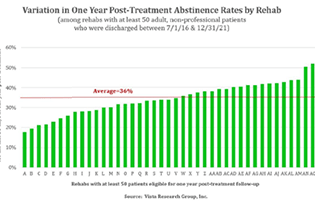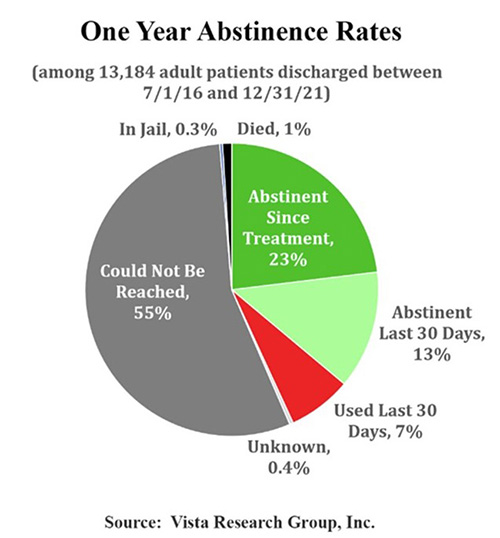
As I’ve traveled around to various addiction-related events, I’ve often heard people say, “addiction treatment doesn’t work.” Sometimes this is loudly proclaimed, typically by staunch supporters of medication-supported treatment who believe that therapy-based treatment rarely succeeds. Other times, it’s shared in an agonized whisper by a family member whose loved one continued to use after one or more treatment attempts.
While it is true that therapy-based addiction treatment doesn’t always work, Vista’s outcomes research shows that it does work extremely well for many patients. On average, 36% of all adult, non-professional SUD patients who started treatment at a center in the Vista Research Network were reachable one year after discharge and reported having completely abstained from alcohol and all non-prescribed drugs for at least the last 30 days:

Disappointingly, Vista’s 36% abstinence rate is identical to the results of the federally-funded DATOS study of 1993, the last time similar research was done. On a more hopeful note, there’s a tremendous variation in abstinence rates among treatment programs in the Vista Research Network, with the one-year abstinence rates at some of the best centers close to or exceeding 50%!
It’s exciting to see how these patients’ abstinence success translates into progress in other areas of their lives. For example, most abstinent patients report feeling excellent or good one year after treatment:
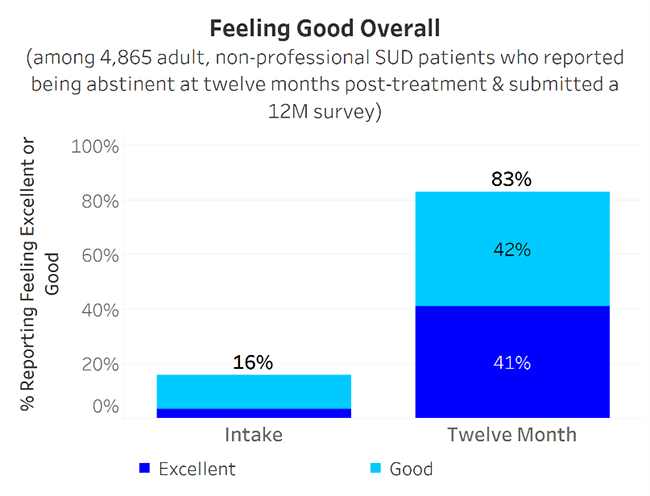
Very few are still struggling with co-occurring disorders (note: the graphs for anxiety and trauma look almost identical to the following depression graph):
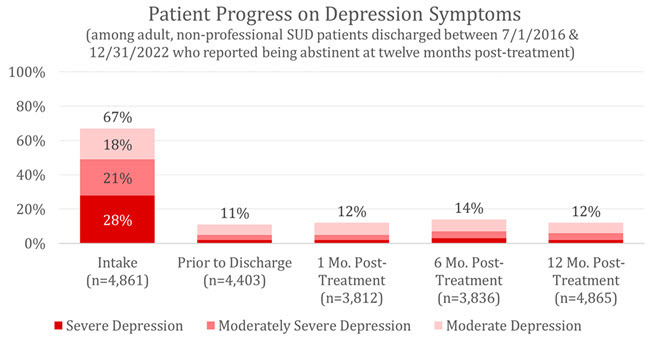
Almost all are making substantial progress on meeting the goals they set for non-usage-related treatment goals, such as regaining the trust of their family, returning home, and regaining a job similar to their previous one:
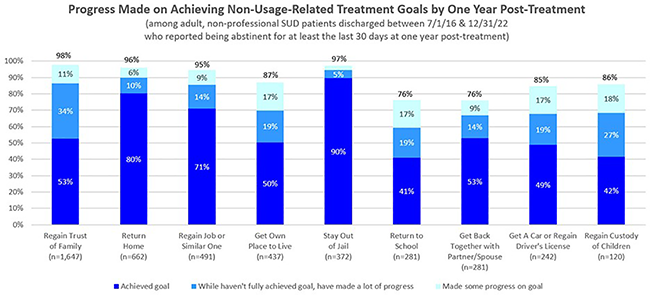
Almost all are now living in stable housing:
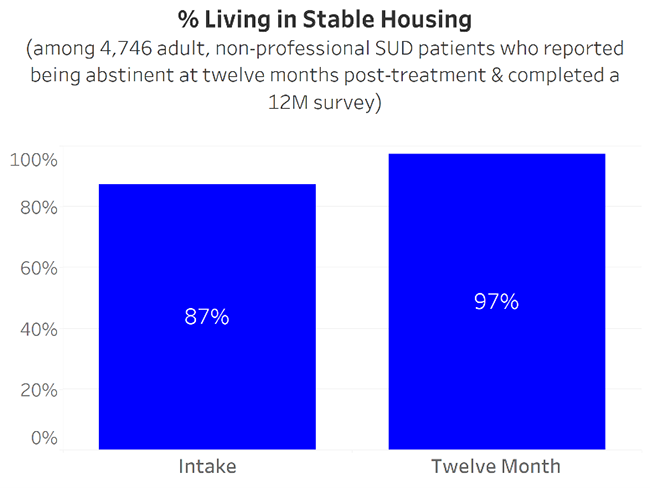
and they’re getting along much better with their closest family members:

The percentage of patients who are working or going to school increased from 70% at the start of treatment to 80% one year later, with another 7% currently looking for work:
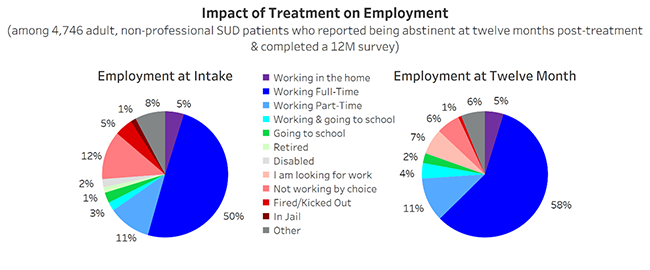
Finally, these patients had 50% fewer emergency department visits and unplanned hospital stays in the post-treatment year compared to the year prior to treatment, with their usage of detox dropping even further:
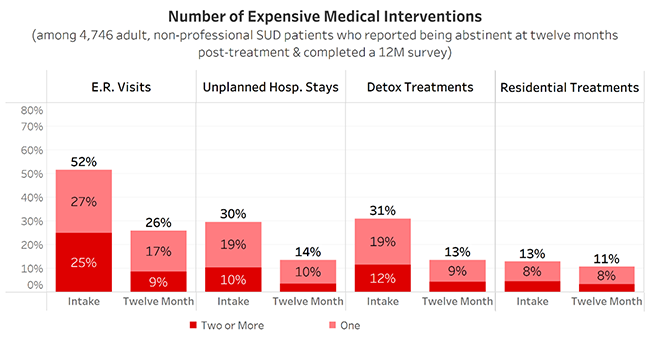
The lives of these 4,746 patients have been absolutely transformed by the high-quality, therapy-based addiction treatment they’ve received. On behalf of these patients and their families, I want to share my very deep gratitude for the superb treatment the independent treatment centers in the Vista Research Network are providing.
![[DATA] Outcomes Research Proves Addiction Treatment Works](/sites/default/files/media/image/2023-07/iStock-1351860620hero.jpg)

